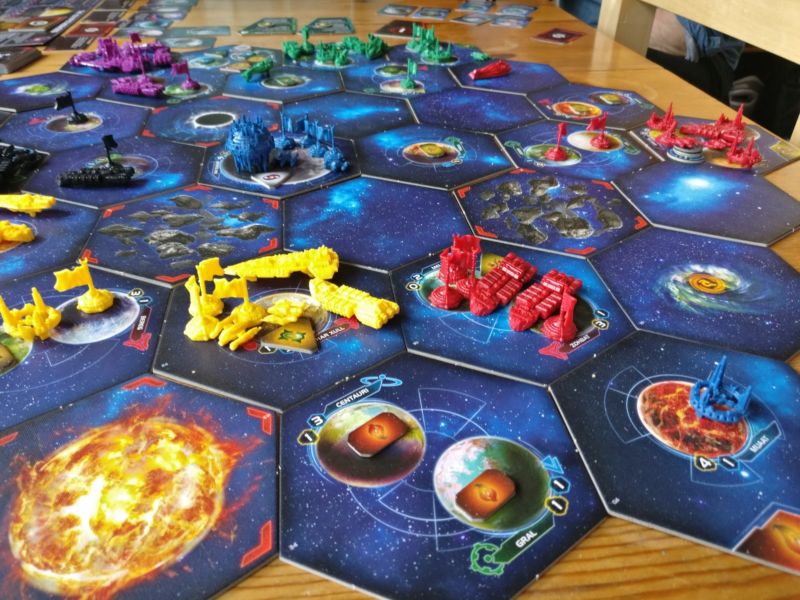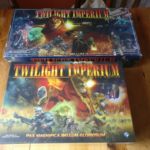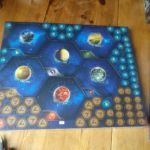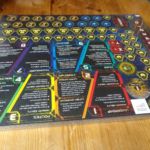Twilight Imperium v4 review: All-day sci-fi gaming just got better

Ever since its first edition was released almost 20 years ago, Twilight Imperium has been one of the most massive propositions in tabletop gaming. Over the years, it has only grown bigger with expansions and revisions. A flawed work of folly and genius, its absolutely titanic third edition (known as TI3) is loved and feared in equal amounts, a base game that comes in a box that’s two feet long and nearly a foot across. Confused beginners need 10 or more hours to play.
The game’s proposition is simple, but the execution is fearsomely complex. Between four and eight players—but ideally six—build a galaxy and lead alien races who want to conquer it. Along the way, you research military technologies, colonize planets, subvert the galactic senate, and smash dozens of small plastic space ships together in generally futile attempts at becoming EMPEROR of SPACE. Think of it as the cardboard version of classic video games like Master Of Orion or Homeworld. When it’s good—with six people who know what they’re doing—Twilight Imperium is one of the best games there is. When it’s bad—after seven hours with only two people left who can possibly win and everyone else going through the motions out of politeness—it’s horrid.
Including the many options introduced in two expansion packs, which are each the price and size of most other premium standalone games, TI3 had begun to teeter under the weight of its ambition. It is after all quite hard to gather six or eight people around a table when players can be knocked from contention a couple of hours into a game that lasts all day. Combine that with roughly 80 pages of rules and hundreds of cards that break them—sometimes in ill-defined ways—and you have a game in which players are battling against each other’s mental and physical stamina as much as against any attack ships off the shoulder of Orion. It was always designed to be too much, but it quickly got, like, too too much.
Enter the fourth edition of Twilight Imperium—it’s more of the same, but it’s also better in almost every way.
Fundamentals return
A huge amount of thought has been put into what was wrong with Fantasy Flight’s flagship interstellar leviathan, and so many of the game’s rough edges have been expertly bevelled. With these changes, the designers have clawed back a solid hour or more of play time that would have been previously lost to the finicky rules of the previous edition.
TI4 is very much an evolution, but enough of the systems have changed that veterans can’t sit down and play it without a thorough read of the rules. And everyone I’ve seen do this sits there for 10 minutes making appreciative cooing noises or remarking on whatever clever rewrite of some cumbersome older rule they’ve just noticed.
The fundamentals haven’t changed. The galaxy is still three rings of hexagons placed around Mecatol Rex, a central capital planet, and it contains plenty more planets, asteroid fields, wormholes, supernovae, etc. Players still start with different racial abilities, a few meager technologies, and some wimpy ships, and they’re still expected to leave the confines of their homeworld in order to smear angry coloured plastic bits across civilized space. The game’s lore is the same and so are the races, though these have been tweaked for balance and interest (in a stroke of generosity, all 17 races from earlier expansions are included).
Gameplay proceeds in the same basic way: there’s the strategy phase in which everyone picks one of eight “strategy cards,” which provide a unique power to be used once that turn, along with one secondary, related power that everyone but the picker can use. Then there’s the tactical phase, where stuff happens, followed by the status phase, where scoring and other bookkeeping happens. And here’s the first of the really big and really good changes: once Mecatol is captured, a fourth phase begins, the agenda phase, in which politics happen.
[“Source-TimesofIndia”]




